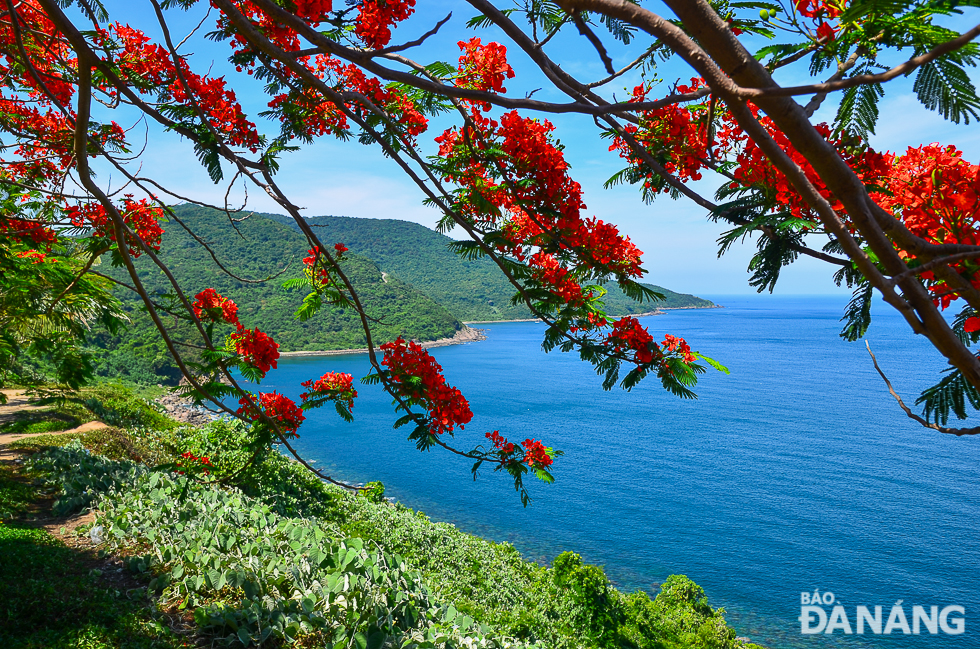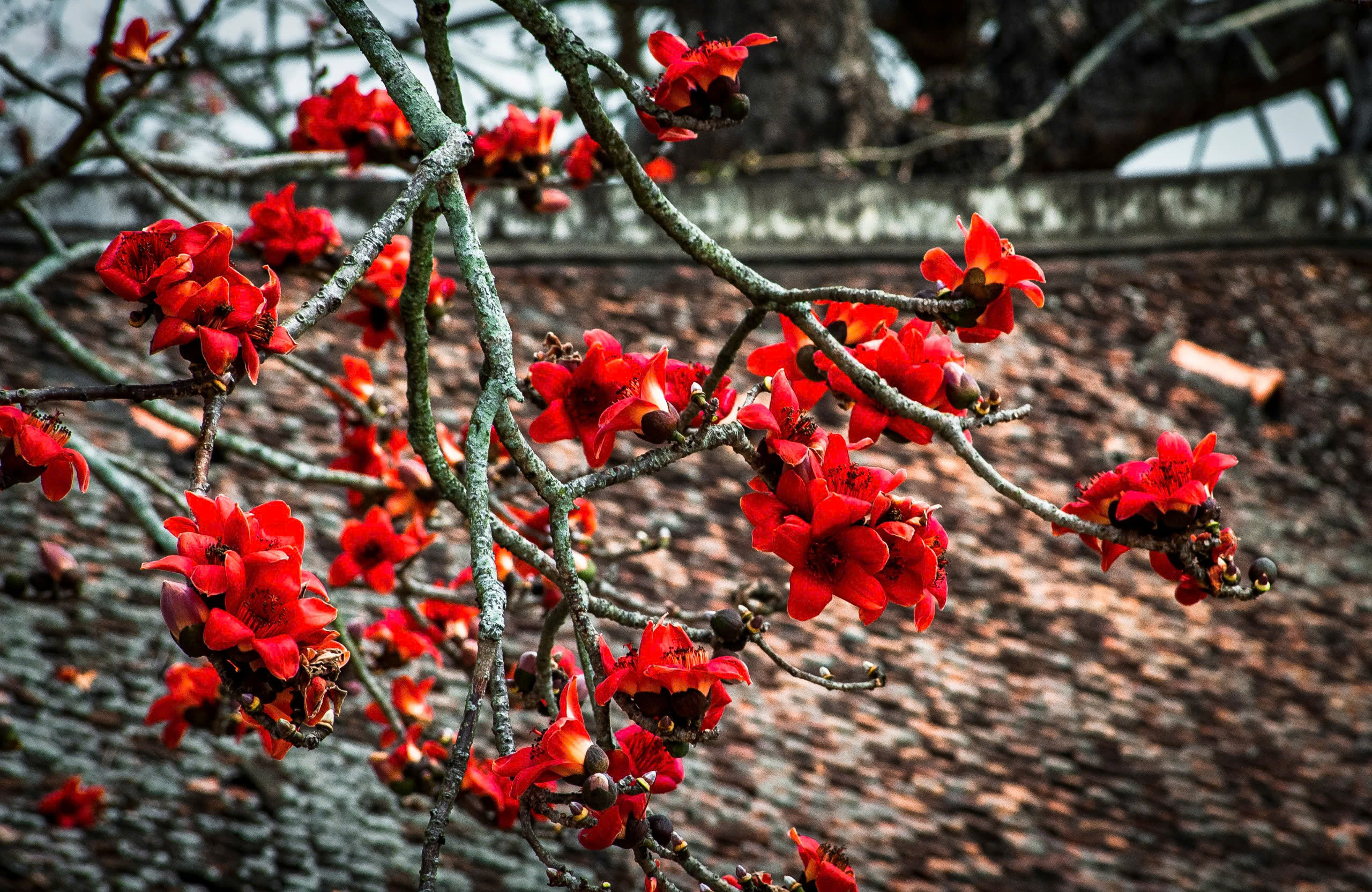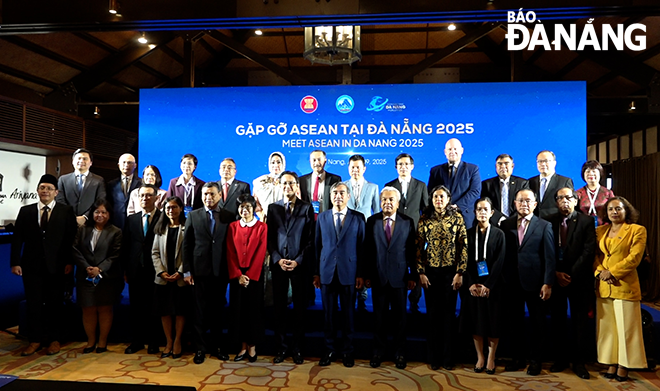Preserving Da Nang's precious natural resources
Da Nang has a diverse and rich natural ecosystem such as Ba Na-Nui Chua and Son Tra nature reserves and the Nam Hai Van Landscape Protection Area including rare species and gene sources with high economic value. Therefore, not only does the enhancement of management effectiveness and public awareness of biodiversity contribute to protecting the city’s environment but it also serves the sustainable socio-economic development.
 |
| Son Tra is brilliant with many kinds of flowers, attracting and captivating the footsteps of travellers to Da Nang. Photo: X.S |
Concentrating many rare species of animals and plants
Returning to the Ba Na - Nui Chua special-use forest in the middle of summer, the green colour of the trees soothes people's hearts after a long trek. The wild beauty of the Ba Na - Nui Chua becomes even more attractive with its unique flower colours.
Mr. Nguyen Thanh Tan, the Director of the Ba Na - Nui Chua Special-Use Forest Management Board, told us about the unique flowers and precious medicinal plants that only those working in forest management and protection can recognise. These are bell-shaped peach blossoms, rolled-up slipper orchids, agarwood and seven-leafed one-flower.
According to many statistical sources, bell-shaped peach trees are present in Ba Na - Nui Chua that is nearly 1,500m above sea level. Each flower is about 1cm in size, blooming in clusters with two colours: light pink and red like small bells hanging on the branches.
Because of this rare beauty, in 2006 and 2007, the Management Board of Ba Na - Suoi Mo Tourist Area, with the support of Mr. Antione Eroute from Nord Pas de Clais region, France, carried out a project to research and develop a trial planting of bell-shaped peach trees to preserve and develop this rare genetic resource. Recently, the Da Nang Biotechnology Centre has carried out conservation with reproduction via tissue culture and explant conservation.
“Currently, bell-shaped peach flowers are still very well preserved, the level of exploitation and encroachment is limited. Recently, we discovered a bell-shaped peach tree species living on the top of the Mang mountain - a 1,700m high mountain peak located between the border of Da Nang - Quang Nam and Thua Thien - Hue. We also discovered a species of red parasol tree with very beautiful flowers growing in this special-use forest. In particular, the newly identified species of rolled-calyptus orchid is included in the list of rare information,” Mr. Tan said.
In addition, the Ba Na - Nui Chua Nature Reserve also has rare animals such as red-shanked douc langurs, mountain goats, otters and bears. Currently, the protection work is very good, so it has the ability to regenerate better than before.
When summer comes, the Son Tra Nature Reserve attracts tourists with many native flowers with beautiful colours such as Than Mat, Hoa Cho and Lim Xet. According to Mr. Ngo Truong Chinh, Head of Son Tra - Ngu Hanh Son Inter-District Forest Protection Department, the Son Tra Nature Reserve is a place where two streams of organisms from the North and the South meet, so it concentrates many rare species of animals and plants.
Through the investigation process, the Son Tra Nature Reserve has just added 302 more plant species and announced 1 new species, bringing the total number of existing plant species to 1,451 species, including 166 endangered, precious, rare, and endemic species. In addition, the reserve also has 531 animal species, including 58 endangered, precious, rare and endemic species.
Animals return when the forest is less impacted
Currently, the Ba Na - Nui Chua Special-Use Forest Management Board manages more than 26,758 hectares in the communes of Hoa Bac, Hoa Ninh and Hoa Phu, of which the border with Thua Thien - Hue Province has a length of 50km and Quang Nam Province with 30km. This is one of the areas with high biodiversity due to the convergence of flora and fauna species in the North and South. To ensure good protection, the Management Board has organised 7 grassroots units (6 forest protection stations and 1 forestry seed development station).
Each station has 6 people on duty and patrols every week in groups of 3 people. Forest rangers who task themselves with inspecting and patrolling mostly walk and spend 2-3 days staying overnight in the forest. Because the stations are all located outside the reserve, they have to carry food and living tools such as blankets and medicine. Therefore, their working time is double the prescribed time.
Along with the good protection work, the biodiversity conservation work is also being carried out better. “The Management Board has assigned more than 280 households around the reserve to patrol and protect the forest. Along with creating livelihoods for people, contributing to reducing great pressure on the forest and the illegal trapping of animals has also decreased significantly. Every year, the Management Board organises the development of a plan to collect and sow native tree species and restore bare land for replacement afforestation, promotes regeneration with supplements and provides 100,000 trees/year for the city's project to plant 1 billion trees. When the forest is less impacted, animals return. Typically the red-shanked douc langur has reached the foot of the Ba Na mountain,” Mr. Tan happily said.
At the Son Tra Nature Reserve, biodiversity conservation, preservation and development of biological gene sources are also carried out through in situ and translocation forms. Thereby, households are encouraged to plant rare and precious tree species with conservation value and medicinal plants.
According to Mr. Ngo Truong Chinh, there is currently no policy to invest in breeding and planting to develop rare genetic resources. However, in the 2020 - 2022 period, the initial results of the project ‘Research on the population of native plant species typical of the Son Tra Peninsula and the possibility of transplanting and planting in parks and streets in Son Tra District’.
In the same period, the Son Tra - Ngu Hanh Son Inter-District Forest Protection Department received, captured and released back into the forest 55 wild animals that strayed into residential areas such as golden monkeys, red-faced monkeys, pig-tailed monkeys, long-tailed monkeys, ground pythons, reticulated pythons, cardamom turtles, clouded monitor lizards, red-snouted squirrels, cobras, brown cobras and civets. This shows that people are increasingly aware of wildlife protection, contributing to improving the effectiveness of wildlife management and protection in the area.
In particular, there has been the participation of the community in forest protection and biodiversity conservation when the Son Tra - Ngu Hanh Son Inter-District Forest Protection Department implemented forest protection contracts with 26 households who are residents in Tho Quang Ward with an area of 1,306.17 hectares. This force has joined with forest rangers to promptly prevent acts of encroachment on resources, plants, animals, forest ecosystems and biodiversity values.
Reporting DOAN HAO LUONG - Translating by A.THU








